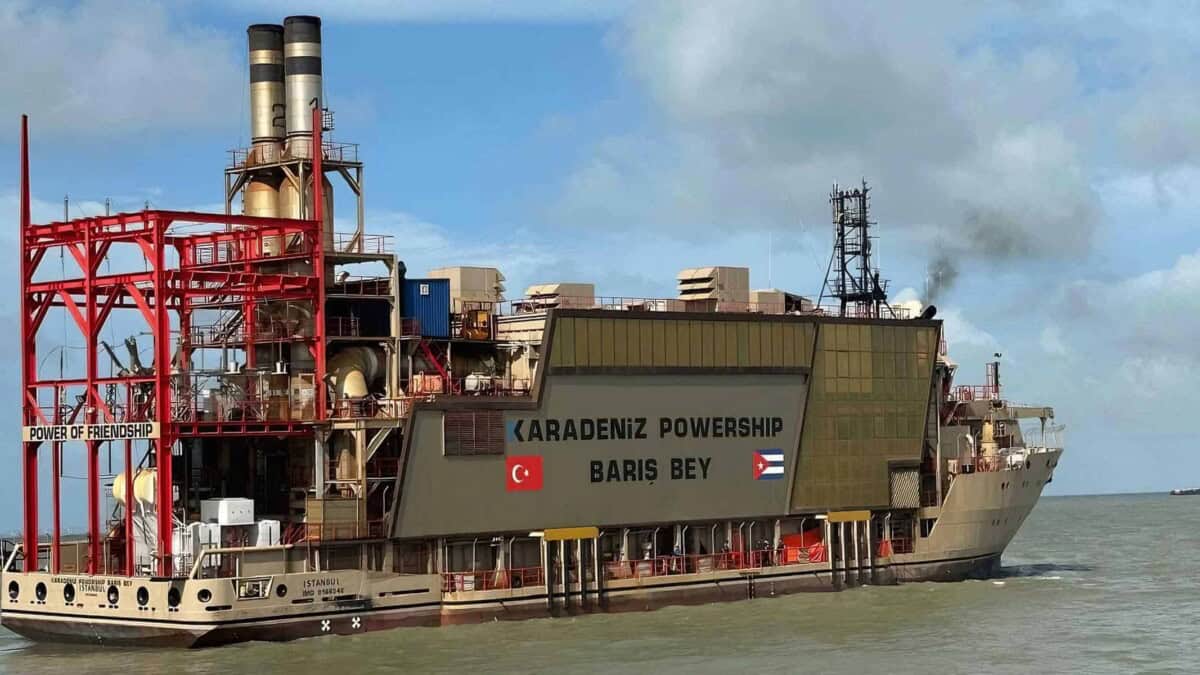In a transaction that has raised eyebrows and curiosity, Guyana has made a considerable financial move to transport a Turkish flatbed, “Baris Bey,” from the Cuban port of Mariel to its shores.
This measure, which has sparked speculation about its cost, is part of a broader context of the energy crisis facing the South American country, highlighting the urgency and willingness of Guyana to secure alternative energy solutions.
The exact amount disbursed for this transfer is no less surprising: one million dollars. This figure underscores the critical importance of the operation in an effort to stabilize the power supply in the face of increasing demand and frequent blackouts in the country.
The state-owned Guyana Power and Light (GPL) signed a contract with Urbacon Concessions Investments, W.L.L (UCI), a subsidiary of UCC Holdings of Qatar, to lease this floating power plant for two years.
In addition to the initial payment, GPL agreed to a monthly freight of $0.0662 per kilowatt hour, plus a maintenance cost of $0.0098 per kilowatt hour generated. The contract also specifies that GPL will handle the supply of heavy fuel for the operation of the ship.
“Baris Bey” has the capacity to generate 36 megawatts of electricity, with two engines producing 18.5 megawatts each. It is expected that this addition to Guyana’s energy system will alleviate some of the frequent blackouts that the country suffers, especially in the eastern provinces where the crisis is more acute. However, the capacity of the flatbed is modest compared to other similar fleets operated in the region.
In addition to managing its own energy difficulties, Cuba has extended its technical cooperation to Guyana by sending ten engineers with relevant skills to support Guyana Power and Light in mitigating its energy crisis. This gesture of support not only strengthens the ties between both nations but also highlights Cuba’s commitment to regional collaboration in critical times.
This move is part of a broader strategy by GPL to diversify its energy sources and reduce dependence on aging infrastructures.
Furthermore, it aligns with the government’s commitment to providing energy at stable and affordable prices, as highlighted by Vice President Dr. Bharrat Jagdeo. In the long term, Guyana plans a transition to a gas-to-energy project expected to supply around 300 megawatts by the end of 2024.
Meanwhile, in Cuba, the energy situation presents its own challenges. Recently, the sixth flatbed, “Erol Bey,” was installed in the Guanabacoa cove, a short distance from the Regla power plant in Havana. However, this vessel remains inactive due to fuel shortages, reflecting the persistent energy difficulties facing the island.
The costly transfer of “Baris Bey” is not only an economic investment but also a strategic bet by Guyana to stabilize and improve its energy capacity in the short term while preparing for more sustainable and large-scale solutions in the future. This case highlights how immediate needs can drive significant financial decisions in the realm of international energy management.
✅Para Recibir TODAS las Noticias GRATIS 👉Síguenos desde Aquí

